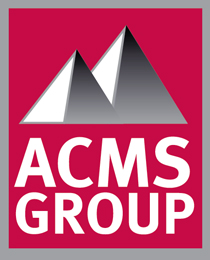When it comes to building safety in an industrial setting, passive fire protection is everything. Factories can burn to the ground if they’re not properly protected, and the owner’s insurance policies will be through the roof.
There are three main types of passive fire protection these days: dense concrete, lightweight cementitious coating and intumescent coating.
This post will cover everything you need to know about cementitious and intumescent coating uses.
Dense concrete
We’ve known about concrete’s fireproof properties for years. That’s why most factories constructed after World War II are constructed mainly of dense concrete and steel beams. However, dense concrete does have its limitations.
Dense concrete is heavy, which means constructing a concrete building requires an enormous amount of steel for support. Concrete also cools quickly after a fire breaks out, and this rapid cooling often leads to cracking and compromises structural integrity.
Thankfully, technological advancements have come along that allow for greater fireproofing capabilities without the use of dense concrete.
Lightweight cementitious coating
As its name suggests, lightweight cement is lighter than dense concrete, so it doesn’t require as much steel for structural support; however, this type of concrete has the same tendency as dense concrete to crack as it cools after a fire. As a safeguard against cracking, cementitious coatings were developed to add a little extra fire protection.
Cementitious coatings are breathable and waterproof, which prevents moisture accumulation on the concrete while fireproofing the property. Cementitious coating uses are found in a wide variety of factories across the world, even though it’s no longer the standard in passive fire protection—that’s where intumescent comes into play.
Intumescent coating
As we just mentioned, intumescent coatings are the best coating for fireproofing a cement structure. These coatings work by charring and expanding in the presence of extreme heat, swelling up to 25 times their original thickness. As the coating expands, it provides outstanding fire protection and extends the time before the steel behind the concrete actually starts to melt.
Like cementitious coatings, intumescent coatings are also used for waterproofing structures; however, intumescent epoxies have better waterproofing properties. They’re better at preventing rust and corrosion, and they even help reduce the chance of mold or mildew growth in a building.
Intumescent coatings can be applied to concrete, steel or any other type of surface; so, intumescent coating uses extend far beyond factories and refineries. You can find these coatings on residential apartment buildings and many other structures. Additionally, these coatings are easy to apply and are effective for years before they need to be reapplied.
Get the help you need if your building is unsafe
If your industrial building is structurally compromised or if your current intumescent coating needs to be reapplied, it’s time to get in touch with the specialists at ACMS Group. We have over 25 years of experience, and we even offer 24/7 emergency service. Contact our refractory concrete and epoxy specialists today to get a quote or to learn more about cementitious coating uses. We look forward to working with you!
